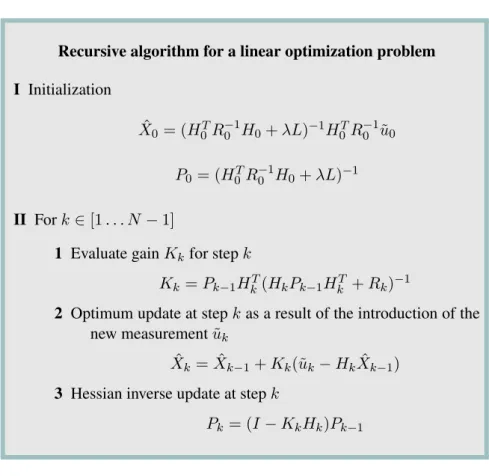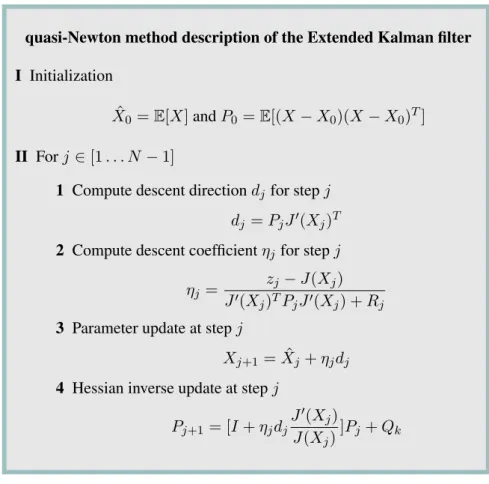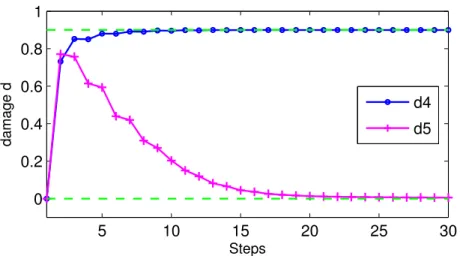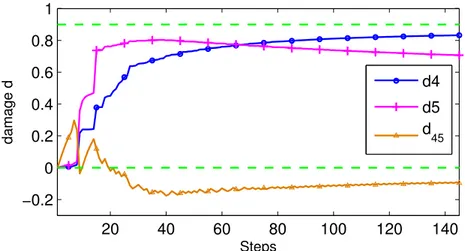A combined Kalman Filter and Error in Constitutive Relation approach for system identification in structural dynamics.
Texte intégral
Figure
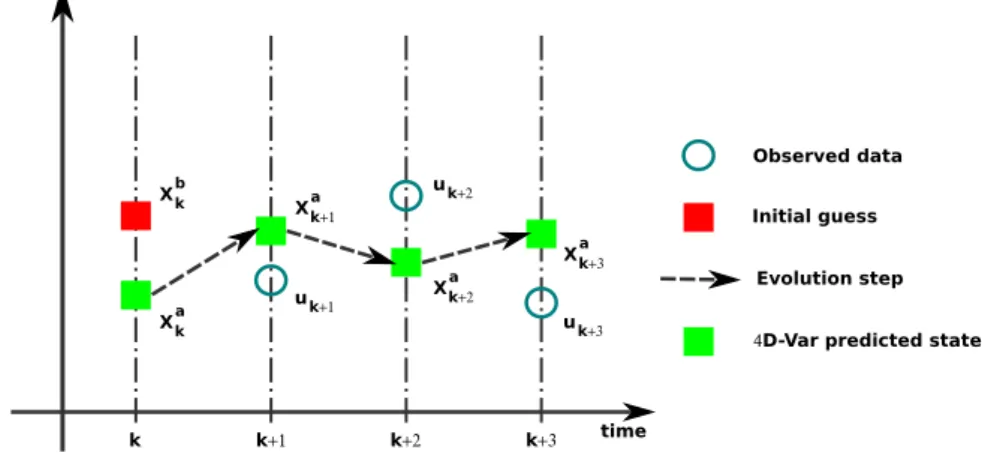
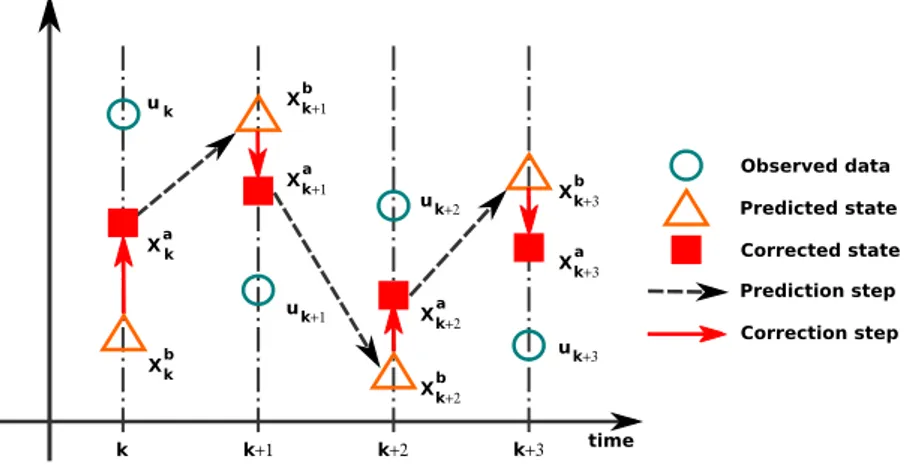
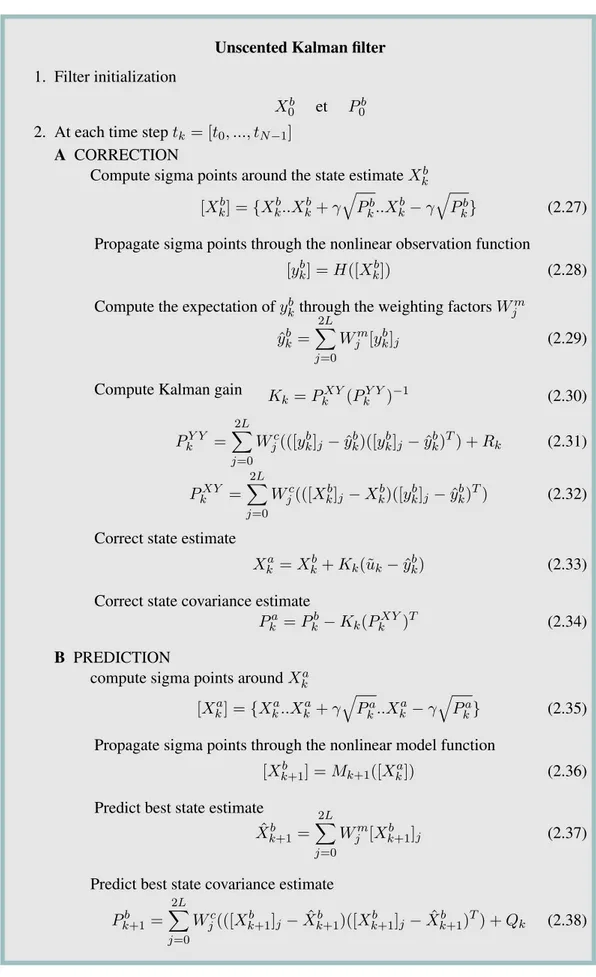
![Figure 2.8 shows both the obtained external fluid effort and contact force for one realization in the time interval t = [0, 45]s with ∆t = 0.001s](https://thumb-eu.123doks.com/thumbv2/123doknet/2963585.81722/49.892.131.746.679.866/figure-shows-obtained-external-effort-contact-realization-interval.webp)
Documents relatifs
Finally, the upper bound for the “online” error associated with the Galerkin-POD is obtained by comparison of the recovered stress field σ(µ) to the stress field b σ r (µ) obtained
In this paper, we have proposed a study of the enhanced error " enh on the constitutive relation in plasticity and shown that the calculation of this error estimator in order
KEY WORDS : finite element method; equilibrated stress recovery; constitutive relation error; error bounds; goal-oriented error
The simulation results show that the model can be used to take the decision — error avoidance, error correction or the combination of both — that allows to de- liver the stream in
q-S-time ‘‘trajectories’’ of the (bottom) LSW 1987 – 1994 and (top) LSW 2000 classes in the Labrador, Irminger, Iceland, Rockall Trough, and ‘‘Ellett Line’’ basins (left
PGD driven by the Constitutive Relation Error Minimal CRE/PGD Pierre-Eric Allier, Ludovic Chamoin, Pierre Ladevèze.. To cite this version: Pierre-Eric Allier, Ludovic Chamoin,
tiple reciprocity method [21, 22J which allows to transform the volume integral corresponding to a body force into an infinite series of boundary integrals using
This paper introduces an error estimator based on the constitutive relation which provides an upper bound of the global error for parametric linear elastic models computed with
